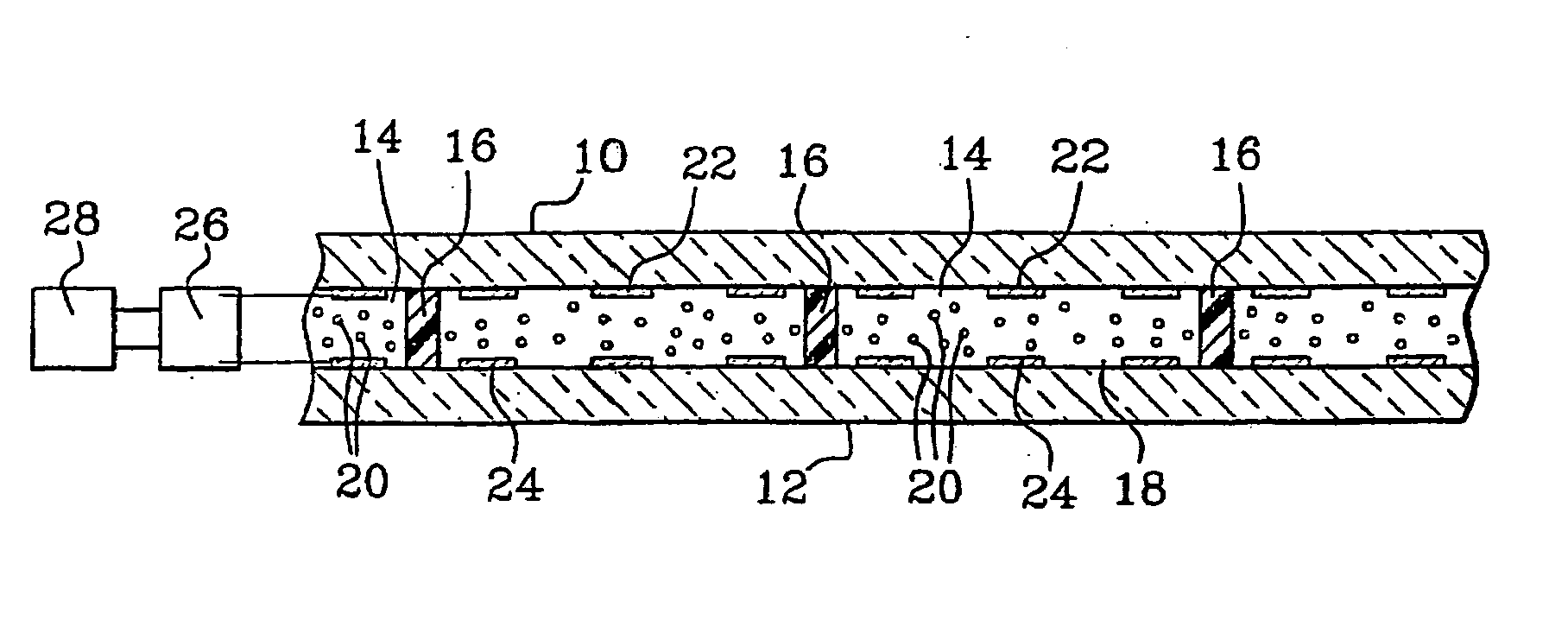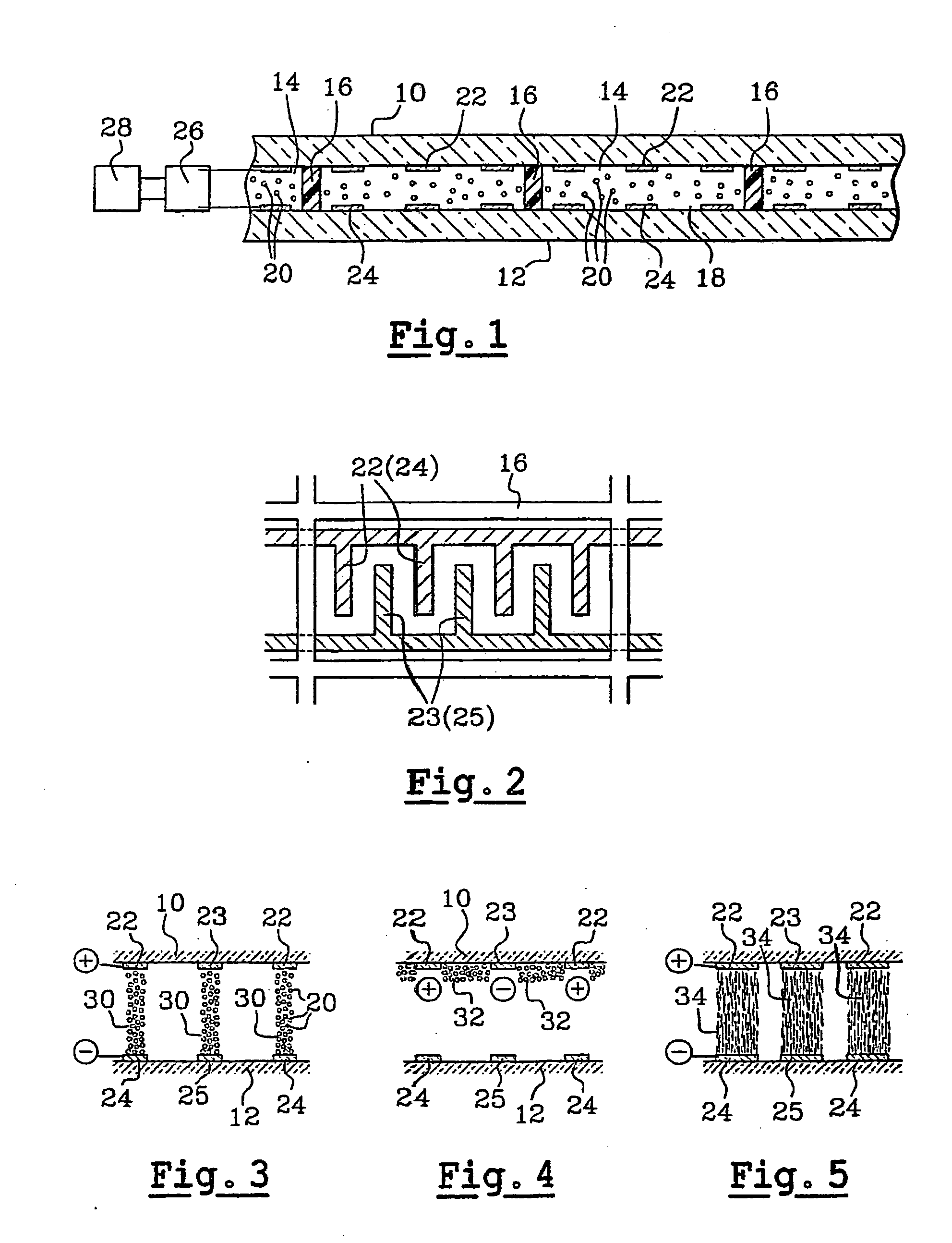Optically active glazing
a technology of active glazing and optical fibers, applied in non-linear optics, instruments, optics, etc., can solve the problems of not enabling the obtained results, other known systems based on electro-optical effects of liquid crystals, complex and expensive, and lack of long-term stability in terms of particle charg
- Summary
- Abstract
- Description
- Claims
- Application Information
AI Technical Summary
Benefits of technology
Problems solved by technology
Method used
Image
Examples
Embodiment Construction
[0024] The glazing of FIG. 1 comprises two plates 10 and 12 of a transparent dielectric material such as glass or a plastic material, which plates are parallel and spaced apart by a small distance, e.g. lying in the range 0.01 millimeters (mm) to 1 mm, approximately, these two plates being identical to or different from each other.
[0025] The internal volume defined between the plates is subdivided into a plurality of small independent volumes or individual cells 14 that are separated in substantially leaktight manner by partitions 16 of dielectric material, e.g. of plastics material.
[0026] The individual cells 14 are filled with a fluid, preferably a liquid 18 that is dielectric or a poor conductor of electricity, which liquid contains a suspension of identical or differing particles 20 of dielectric material, said particles having a size lying in the range 0.01 μm to 50 μm, approximately.
[0027] The facing faces of the plates 10 and 12 carry electrodes 22, 24, e.g. of the same ki...
PUM
| Property | Measurement | Unit |
|---|---|---|
| size | aaaaa | aaaaa |
| width | aaaaa | aaaaa |
| frequency | aaaaa | aaaaa |
Abstract
Description
Claims
Application Information
 Login to View More
Login to View More - R&D
- Intellectual Property
- Life Sciences
- Materials
- Tech Scout
- Unparalleled Data Quality
- Higher Quality Content
- 60% Fewer Hallucinations
Browse by: Latest US Patents, China's latest patents, Technical Efficacy Thesaurus, Application Domain, Technology Topic, Popular Technical Reports.
© 2025 PatSnap. All rights reserved.Legal|Privacy policy|Modern Slavery Act Transparency Statement|Sitemap|About US| Contact US: help@patsnap.com


